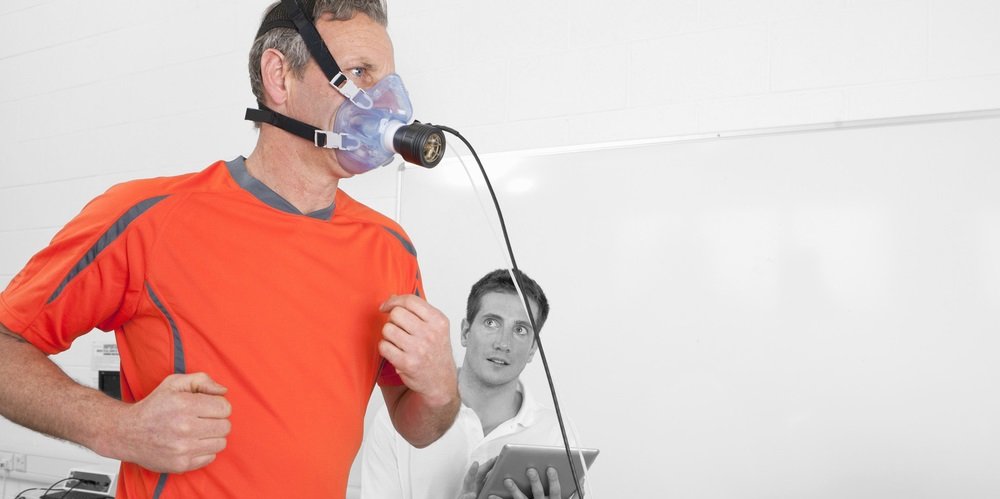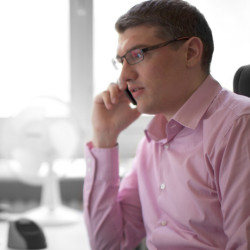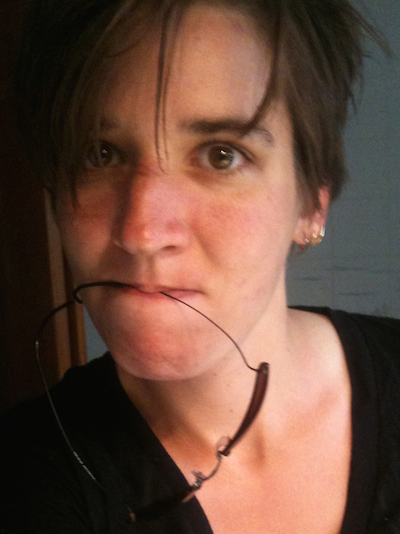HTIC

Presentation by Roger Gassert, ETHZ
Capturing and Restoring Movement in Neurorehabilitation using Wearable Sensors and Robotics
Presentation by Dr. Govind V. Kaigala, IBM Research Laboratory (Zurich)
Tissue microprocessing: Shaping sub-nanoliter volumes of liquids on tissue sections for multimodal analysis
In contrast to standard microfluidics, which are typically closed, we are developing a scanning, non-contact microfluidic technology that can shape liquids in the "open space" over surfaces. This technology utilizes a microfluidic probe (MFP) having microfabricated structures for localizing a liquid of interest on a surface using hydrodynamic flow confinement. MFP permits patterning surfaces with proteins and other biomolecules in an additive and subtractive manner, forming gradients on surfaces, and interacting with cells on surfaces. With flow confinement operating at volumes smaller than 1 nanoliter, a few cells can be targeted in a human tissue section for the specific staining of disease markers. Flow confinement and efficient use of chemicals can be further optimized using a concept called "hierarchical" hydrodynamic flow confinement. I will show how this family of liquid scanning probe devices is evolving as a bioanalytical tool in order to alter the physics and chemistry of biological interfaces at the micrometer to centimeter-length scales. I will also propose concepts pertaining to tissue microprocessing, cell microtechnology and spatially resolved molecular profiling which may contribute to the multi-modal analysis of critical samples in the context of pathology and cell biology.
Dr. Govind Kaigala is a Research Staff Member at the Research Laboratory of IBM in Zurich. He joined IBM in 2010 in the Science and Technology department. He is currently leading activities on liquid-based non-contact scanning probe technologies – microfluidic probe – and is championing concepts on “microfluidics in the open space” and “tissue microprocessing”. These research activities are driven by specific needs in the fields of pathology and personalized medicine. His broader research interests include leveraging micro- and nanosystems and assays for microchip-based chemical and biomolecule analysis applied to medical applications.
Presentation by Stéphanie Mader, CEDRIC/CNAM 
Le game design de jeux thérapeutiques : Modèles et méthodes pour la conception du gameplay
Durant cette présentation, nous commencerons par une analyse du domaine des jeux thérapeutiques d'un point de vue game design pour en extraire les principales difficultés de conception. Ensuite, nous présenterons les méthodes et outils que nous proposons pour aider le game designer de jeux thérapeutiques face à ces problèmatiques.
Le principe de combiner jeu et thérapie a pour but d'utiliser la faculté des jeux à motiver les joueurs durant de longues heures pour augmenter la régularité de suivi des protocoles thérapeutiques par les patients. En effet, lorsque les activités thérapeutiques sont répétitives, ennuyeuses, et pénibles, les patients se démotivent, suivent irrégulièrement le protocole quand ils ne l'abandonnent pas complètement.
Les jeux thérapeutiques sont donc vus comme une solution prometteuse. Transformer ces exercices en jeu permet de les rendre plus attractifs pour le patient, voir de susciter chez ce dernier une forme de motivation "intrinsèque", c'est à dire liée au plaisir procuré par l'exercice lui-même et non pas uniquement par son bénéfice thérapeutique.
Ce type de jeu s'inscrit dans le domaine de la santé, et le game designer doit donc, au delà de l'aspect ludique, être capable d'appréhender de nombreuses informations médicales, tant du point de vue de la condition du patient que des nombreuses normes liées au développement d'une application médicale.
Le problème de conception le plus fondamental des jeux thérapeutiques est le gameplay, c'est-à-dire des objectifs de jeu et des actions que le joueur doit effectuer pour atteindre ces objectifs. Dans un jeu thérapeutique, le gameplay doit à la fois produire l'effet thérapeutique et motiver le patient à suivre son protocole. Les problèmes sous-jacents de celui-ci sont l'évaluation médicale et ludique du jeu et l'échange de connaissances entre game designers et experts santé.
Nous proposons une méthode de game design de jeu thérapeutique allant de la définition du problème à l'évaluation. Cette méthode intègre les autres solutions que nous proposons, notamment le modèle player/game/therapy et une méthode de formalisation du gameplay.
Presentation by Ender Konukoglu, ETHZ
Quantitative Medical Image Analysis for Personalized Decisions
The advances in acquisition technologies and the increasing use of patient-specific information in clinical practice are giving computational image analysis and modelling important roles in healthcare. This presentation will be about my overall research on medical image computing. First, I will present an overview of my research in medical image computing. Then, I will delve into detail on two related topics: group analysis with multivariate models and constructing subject and disease specific effect maps. I will show that using multivariate methods for identifying “relevant” features highly depends on the definition of “relevant” and provide an algorithm to detect an exhaustive set of features that are affected by a certain condition. Later, I will build a probabilistic model that combines image restoration and accuracy estimation techniques to extract personalized maps showing areas affected by a condition of interest.
Presentation by Arnaud Chiolero, Observatoire Valaisan de la Santé
Présentation : Big data in epidemiology: too big to fail?
Presentation by Pascal Pfiffner, Forschungszentrum Medizininformatik, Universitätsspital Zürich

Setting ResearchKit and ResearchStack on FHIR
Creation of research-grade smartphone apps has become easier than ever with the arrival of ResearchKit for iPhone and ResearchStack for Android. Apps built on top of these frameworks not only distribute surveys to study participants, they also leverage smartphone sensors to return an array of additional data. This includes activity and workout data, health data collected via external devices such as body scales and glucometers, and audio and video data recorded specifically for the study.
Here I present how we connect patient generated data, collected on the smartphone through research apps, to the health system using the emerging HL7 standard “Fast Healthcare Interoperability Resources”, or “FHIR”.
Presentation by Michal Elboim, University of Haifa (Israel)
Spatio-temporal gait characteristics of elderly individuals during backward and forward walking with shoes and barefoot
Backward walking (BW) is an inherent component of mobility and function in daily activities, particularly indoors, when it is more likely that a person is barefoot. No studies to date have compared the spatio-temporal characteristics of BW with and without shoes in elderly individuals.
This study compared spatio-temporal measures of BW patterns among elderly individuals while barefoot or wearing shoes. Forty-seven elderly individuals (13 men and 34 women, 76.7±7.7 years of age) were evaluated. Participants were requested to walk at a comfortable, self-selected pace across the GAITRite® walkway for three trials under each of four conditions: walking forward (FW) and BW wearing their own comfortable low-heeled walking shoes and FW and BW walking without shoes.
Gait speed, stride length and cadence were significantly increased in FW versus BW, with a decrease in double limb support (DLS), both with and without shoes.
Barefoot FW was associated with a significantly decreases in stride length and in DLS time, and significantly increased gait cadence compared to wearing shoes, with no effect on gait speed. BW barefoot resulted in significantly increased gait speed and cadence, and decreased DLS compared to BW with shoes. BW stride length was not affected by footwear. Accordingly, wearing shoes affected FW versus BW differently in terms of velocity and stride length. Comprehensive gait and dynamic balance analysis might provide more information if assessments of backward and forward walking, barefoot and in shoes are included.
Presentation by Silvia Genarelli, CSEM
Electrochemical sensors for toxicity monitoring
European legislation is restricting the use of animals for toxicological studies, which increases the need for alternative testing methods. CSEM is active in the development of novel platforms and methods for alternative toxicity testing. An example of it is the European Project HEMIBIO, which was aimed at the realization of a hepatic 3D micro-bioreactor reproducing in-vitro the complexity of the liver. One of the major challenges in building a 3D-liver bioreactor is the lack of data on the complex environment present inside the bioreactor where the cells live, aggregate and differentiate. Most of the time, physiological samples are aliquoted to determine hepatic functions and metabolism, which is an inaccurate, time-consuming and often destructive process in particular when the sample volumes are small. In these circumstances, microsensors located in the direct vicinity of the cells can play a vital role, by monitoring cell culture conditions and thus help mimic the natural microenvironment.
Presentation by Dr. Stefanie Mathes, ZHAW
Applications of in vitro skin models
Three dimensional (3D) tissue models of the human skin are probably the most developed and understood in vitro engineered constructs. The motivation to accomplish organotypic structures was driven by the clinics to enable transplantation of in vitro grown tissue substitutes and by the cosmetics industry as alternative test substrates in order to replace animal models. Today a huge variety of 3D human skin models exist, covering a multitude of scientific and/or technical demands. The presentation summarizes and discusses different approaches of skin model development and projects of the ZHAW in this context. Examples like the establishment of full thickenss models for assessment of compound efficacy, epidermal models as test tools for sensitization risk assessment and new production technologies will be highlighted. Finally, new chances and opportunities for the next years in respect to human skin model applications will be discussed.
Présentation de Julien Torrent, Fondation Suisse pour les Téléthèses (FST) 
Innovation technologique au service du handicap
Présentation de la Fondation Suisse pour les Téléthèses (FST), son département R&D (le FSTLab), produits réalisés, projets en cours et vision pour le futur.

Presentation by Prof Olaf Blanke, EPFL
Cognitive Neuroprosthetics: Robotics, virtual reality, and neuroscience for neurorehabilitation
I will first present a brief overview of three converging lines of research – neuroscience, virtual reality, and robotics. We actively pursue these lines of research to understand the human brain, to develop novel technologies, and to dynamically pursue industry collaborations and startups. I will then present our broad field of applications in medicine where we apply these technologies with our Swiss and international medical partners for novel diagnostics and therapeutics for chronic arm pain in orthopedic patients, neuropathic pain in patients with spinal cord injury, embodiment in upper limb amputees with peripheral neural implants, pneumological patients with breathing discomfort, and hallucinations in patients with schizophrenia.